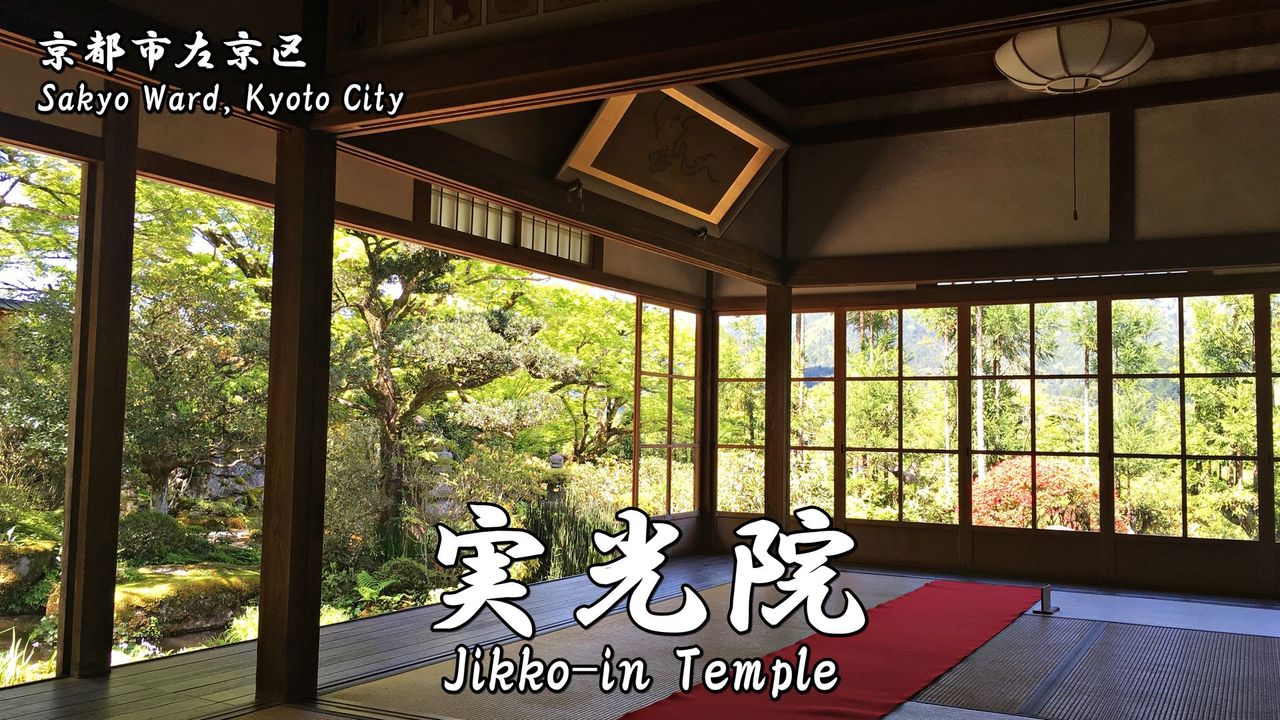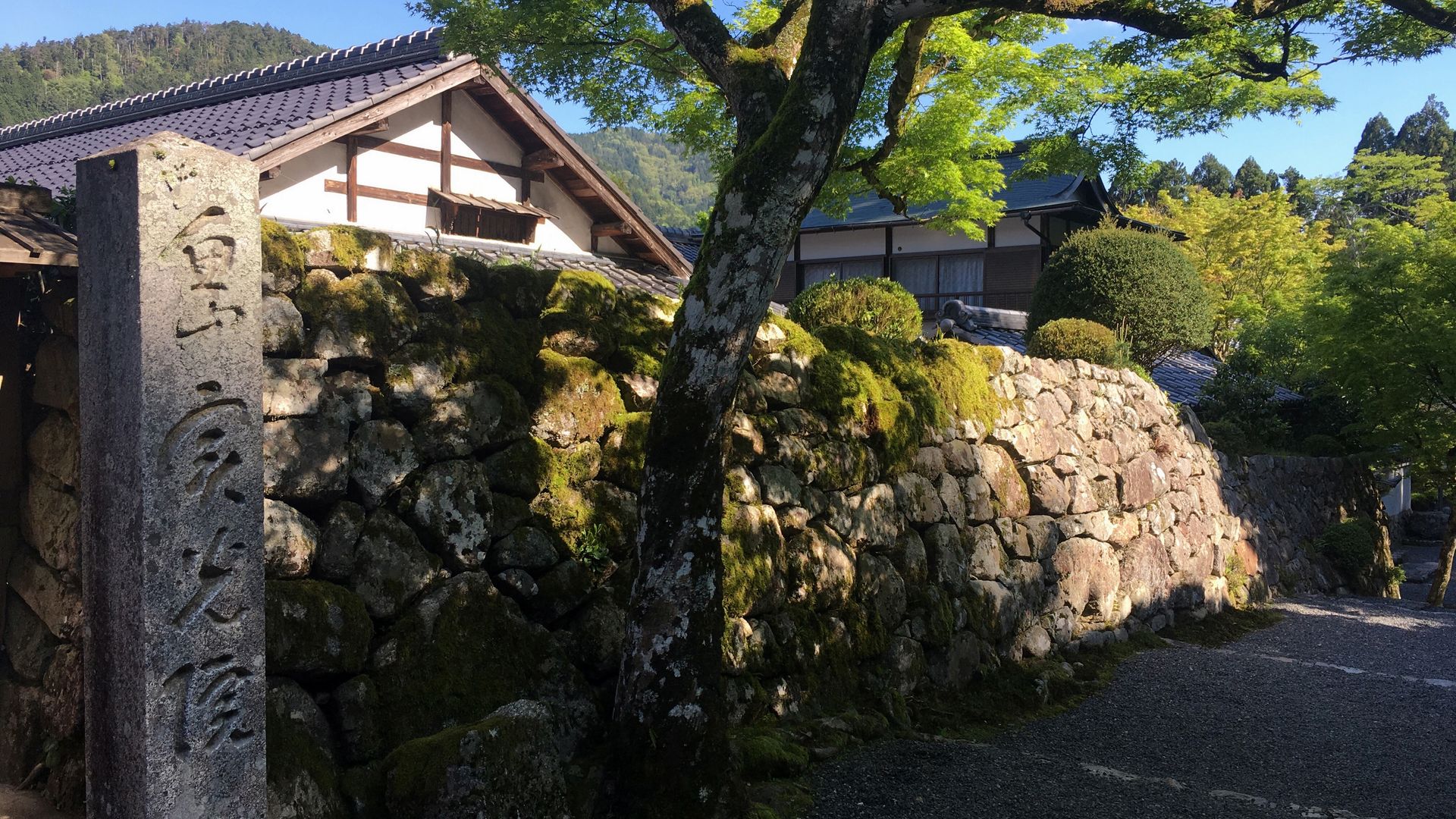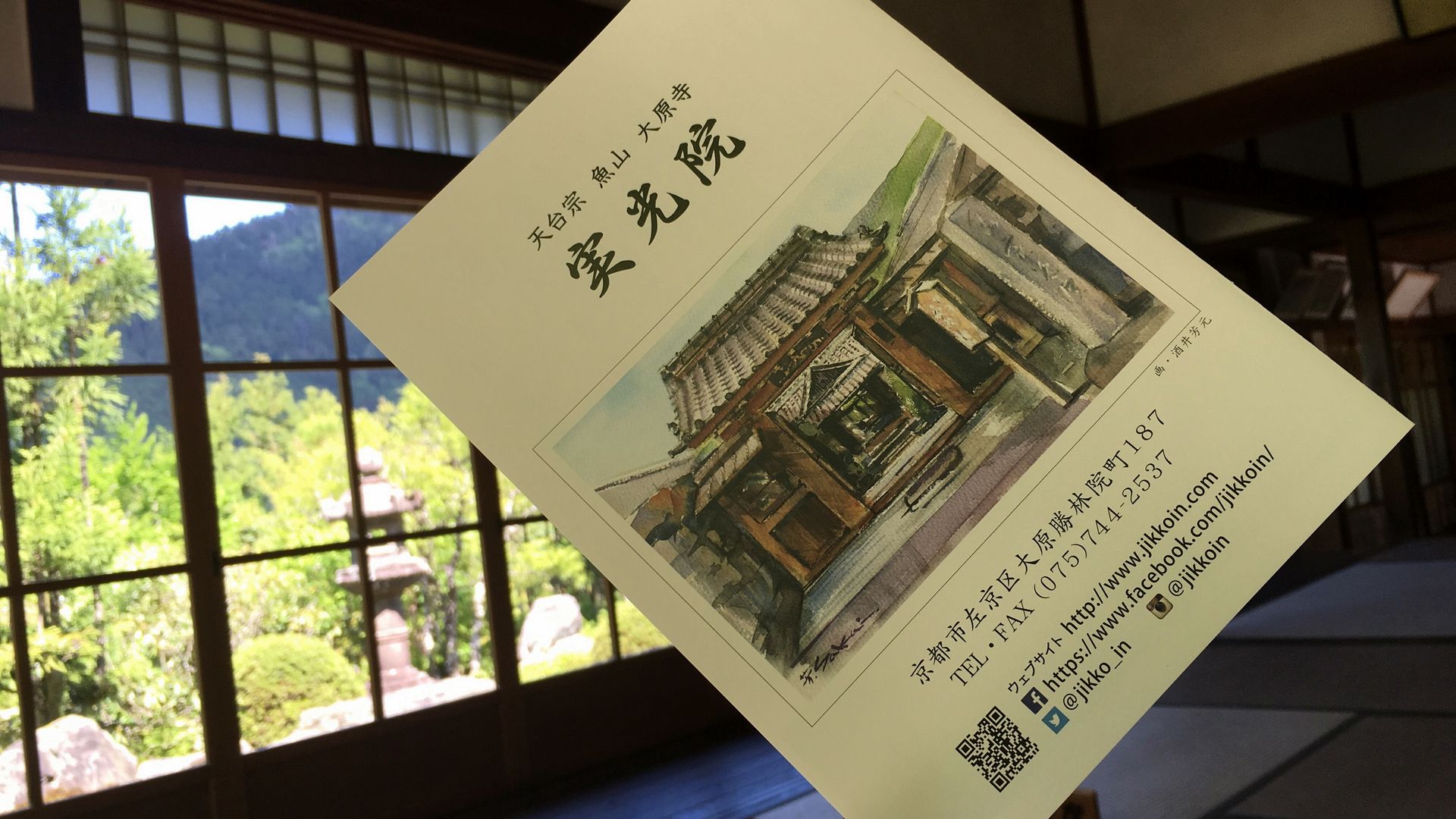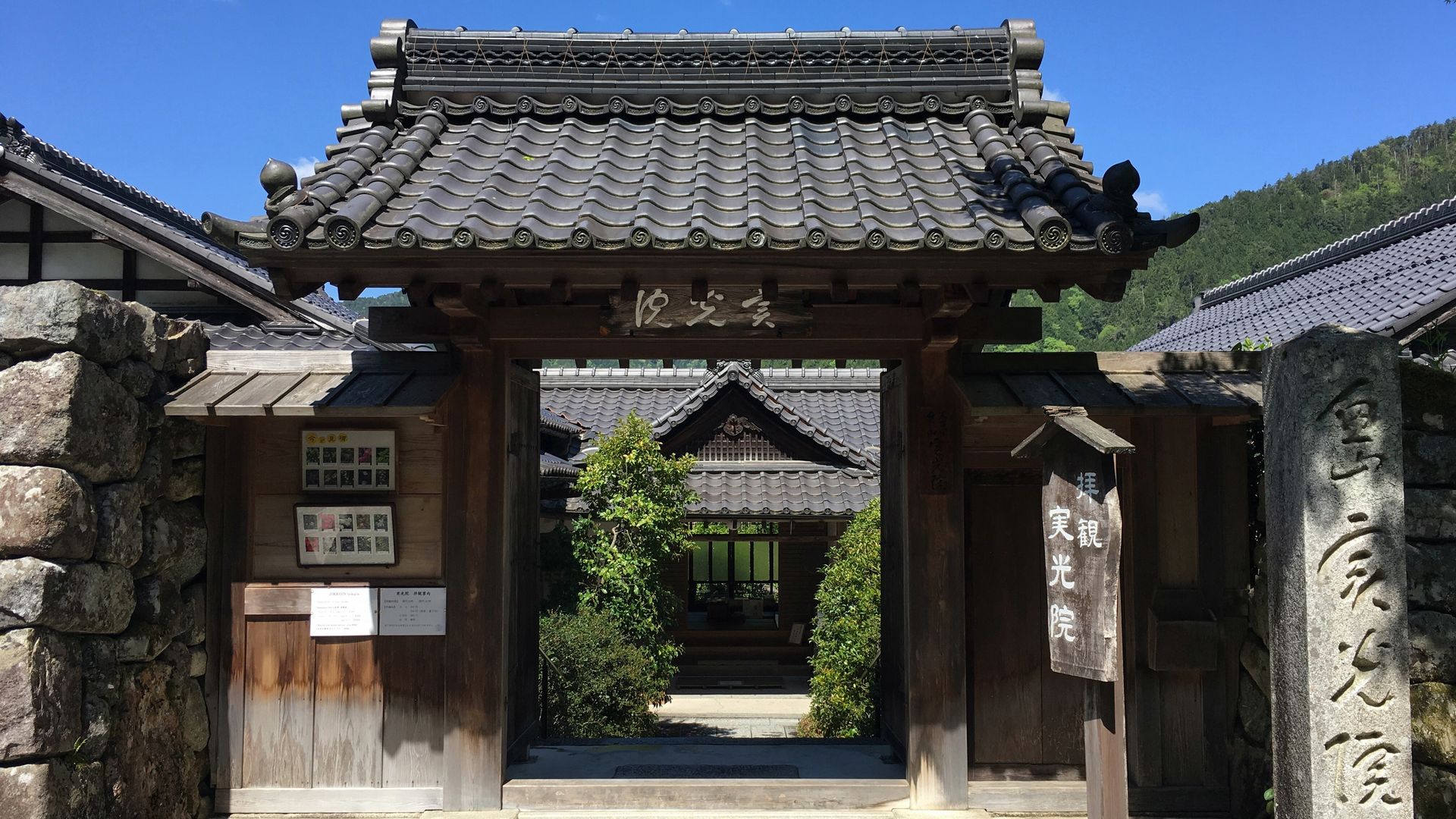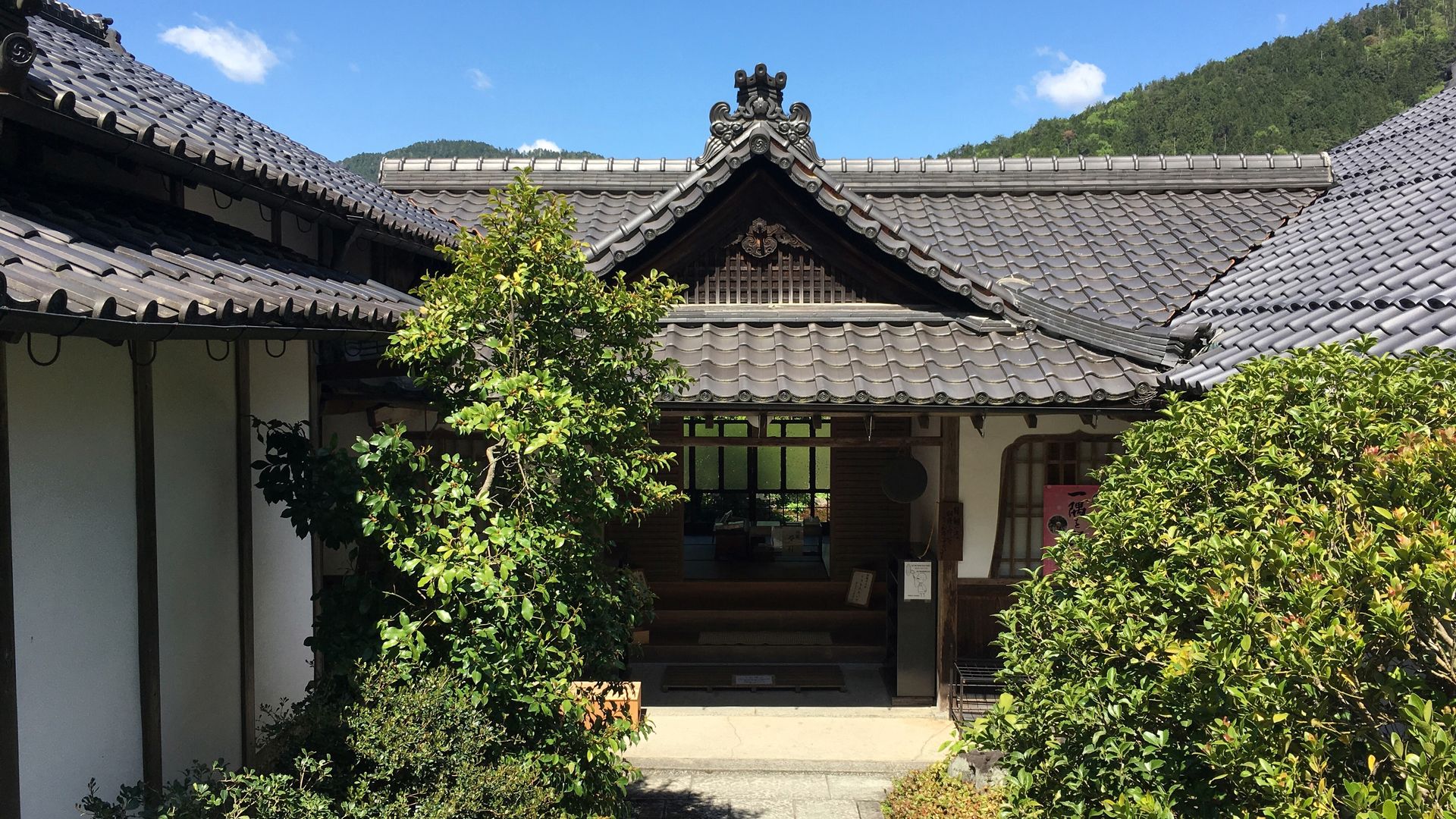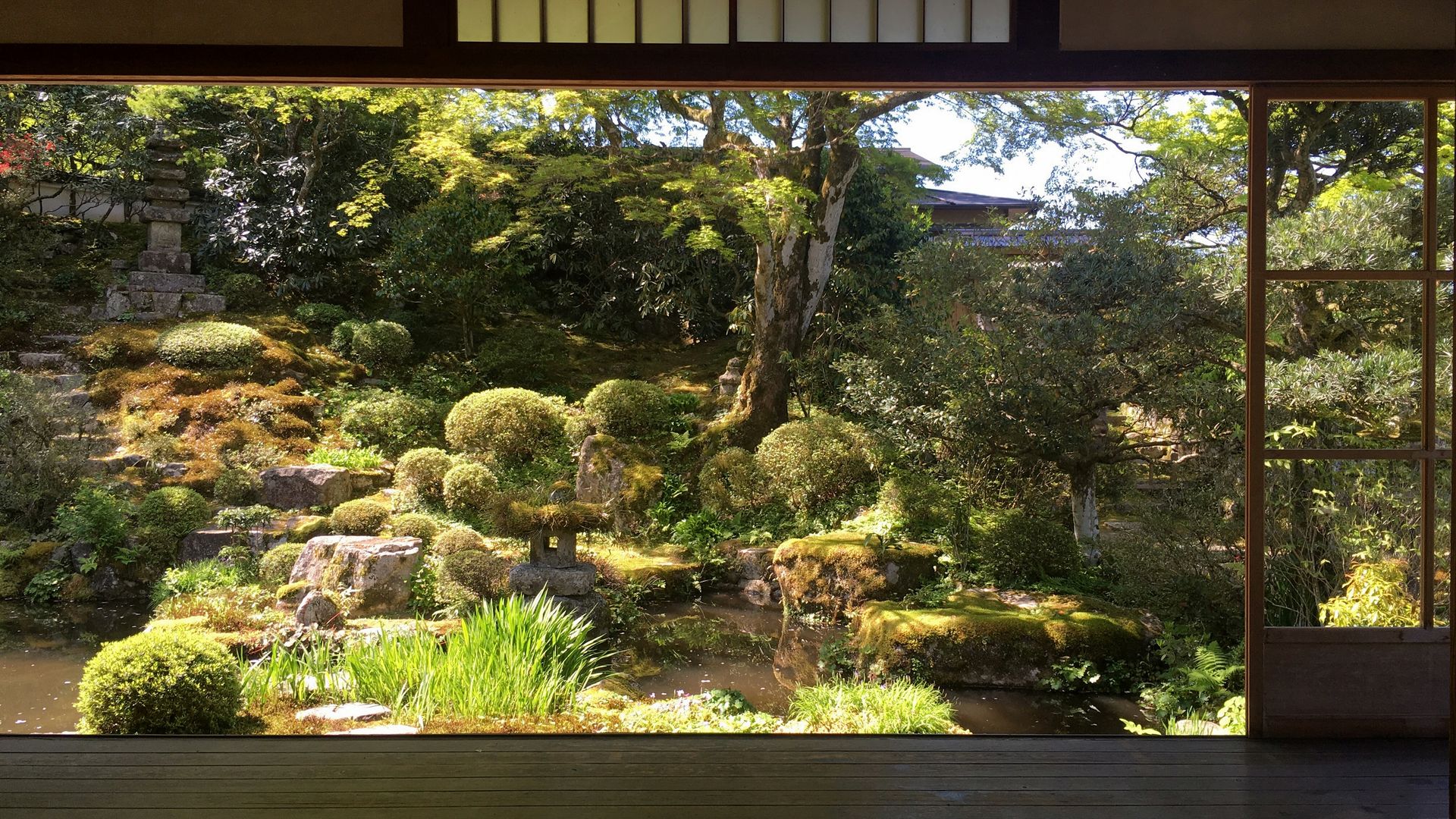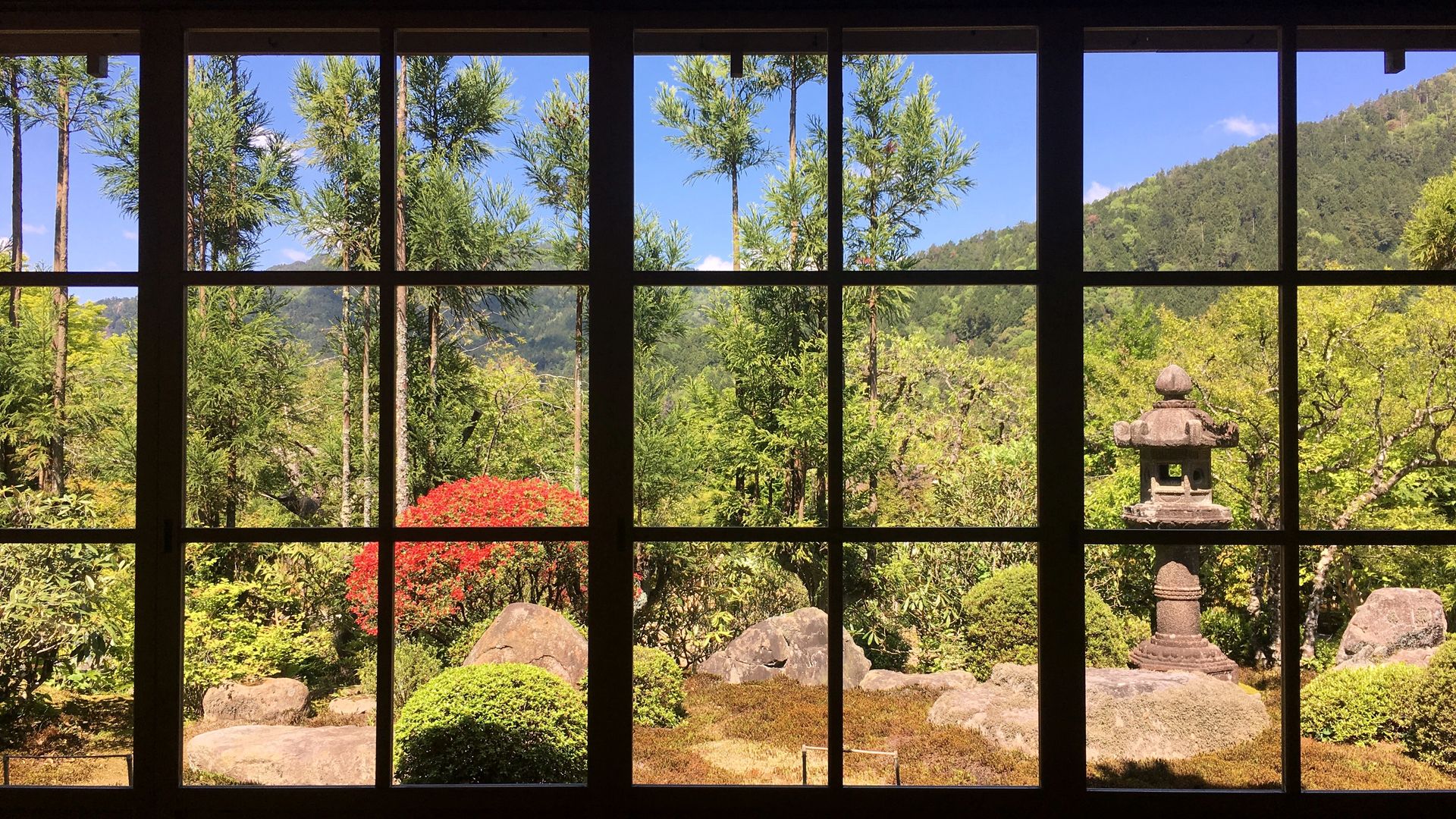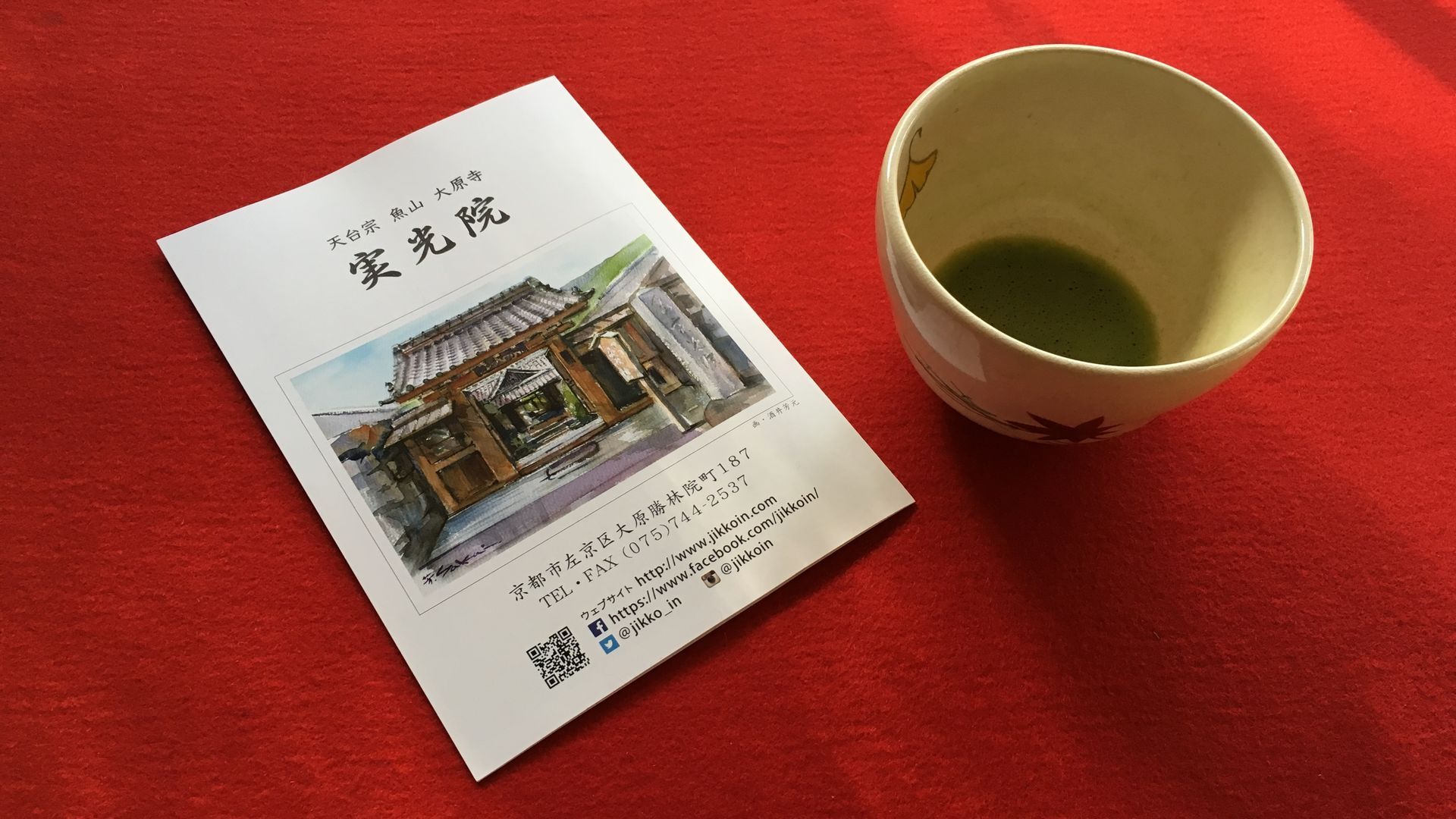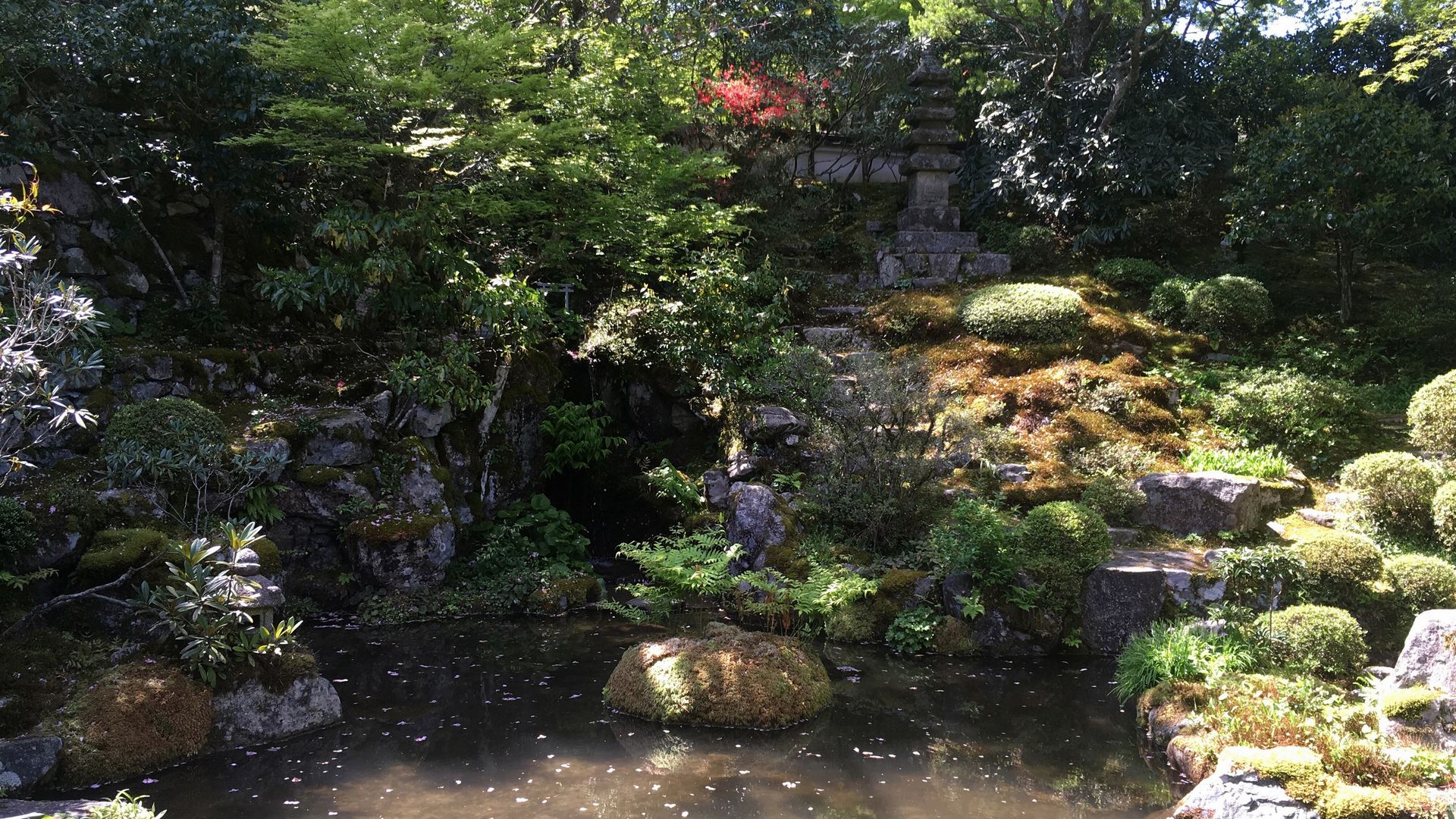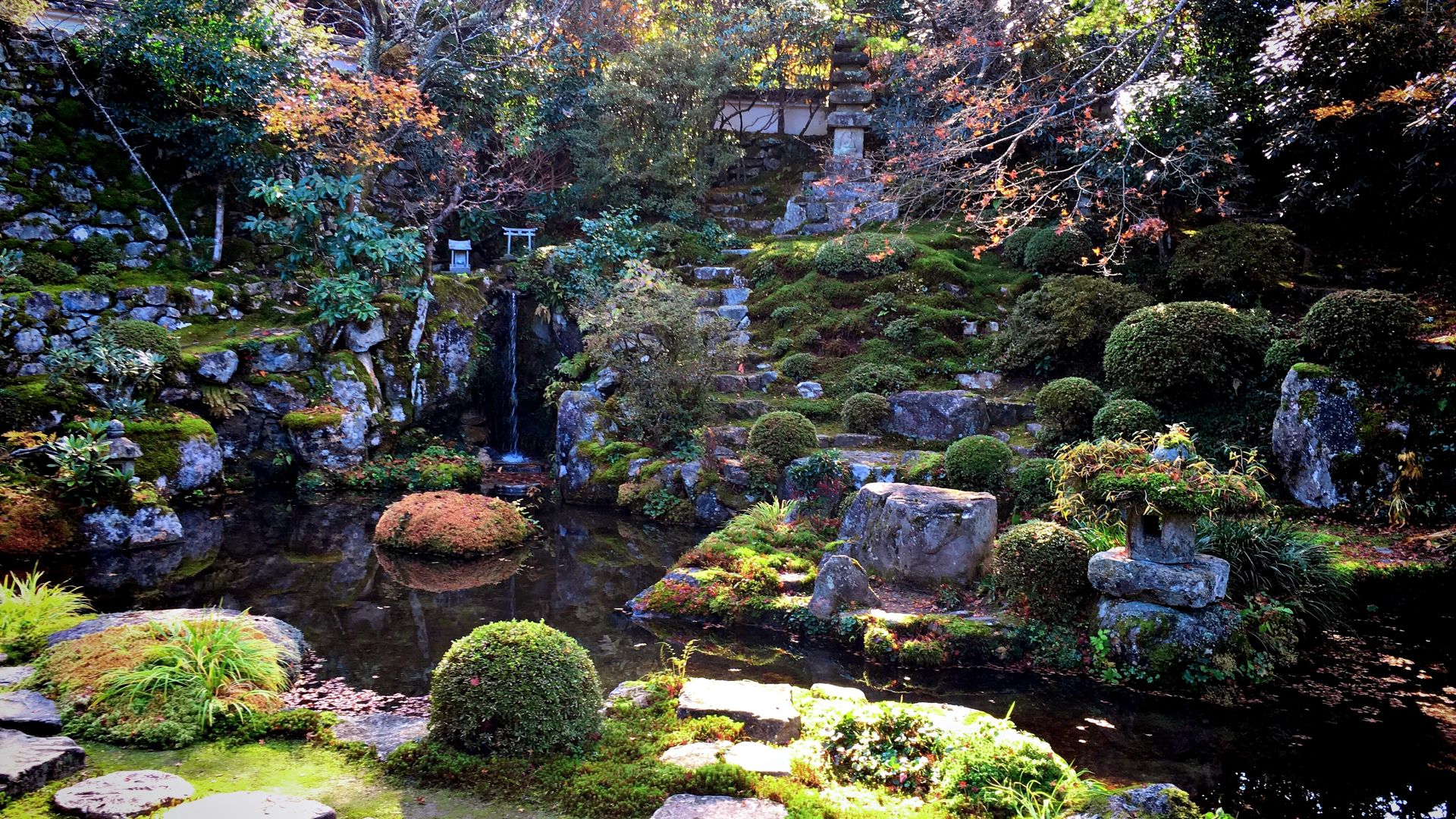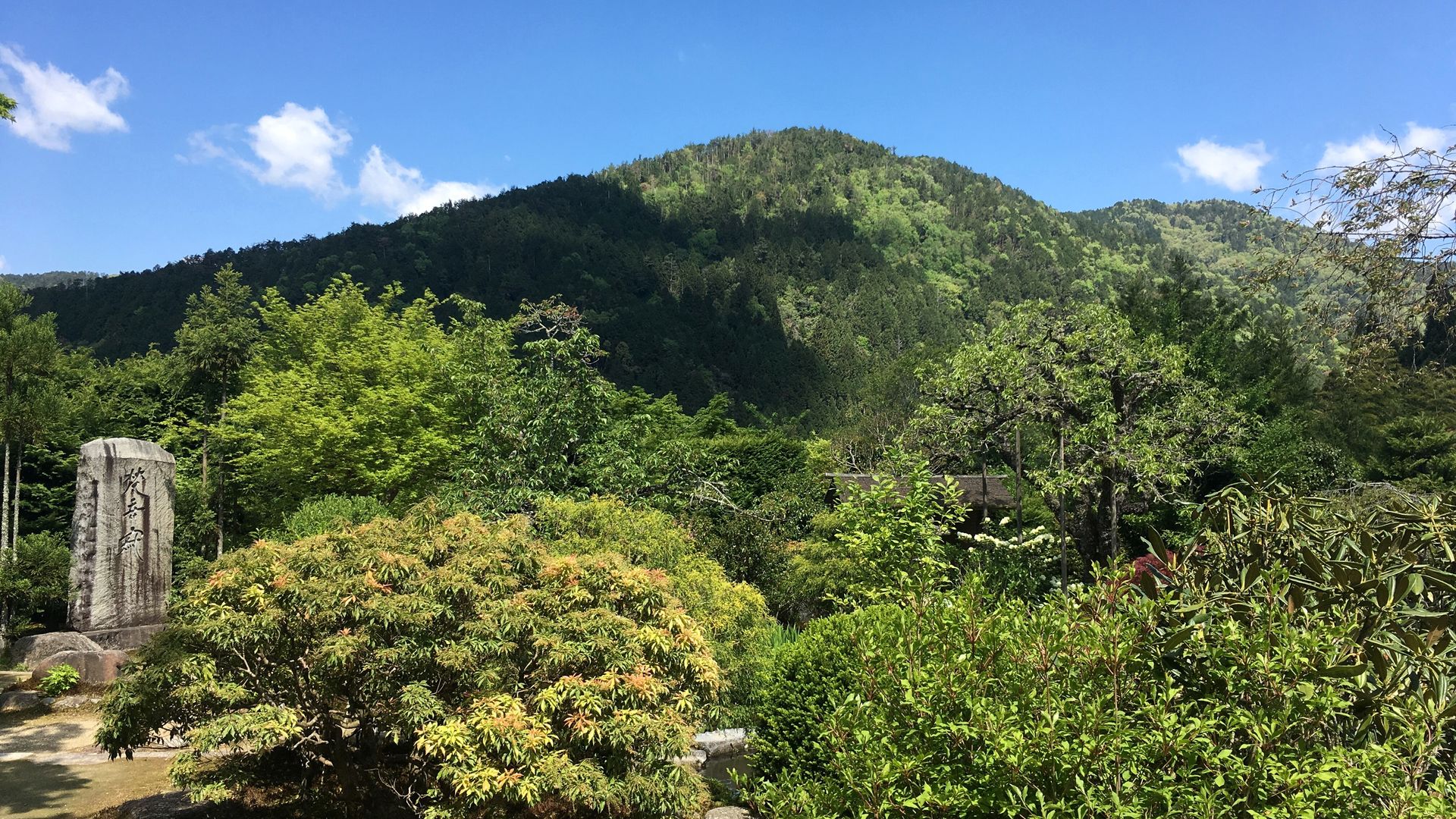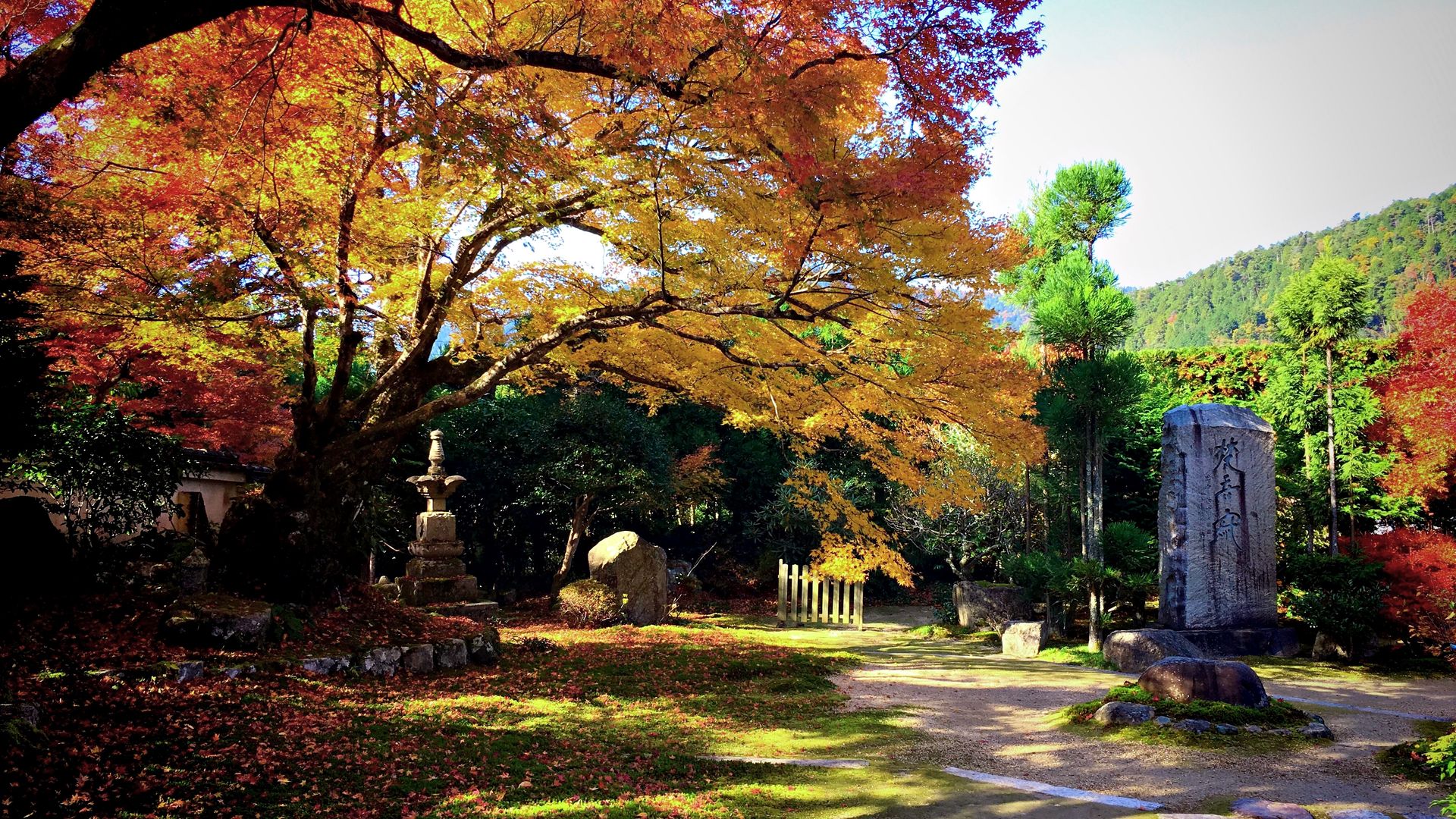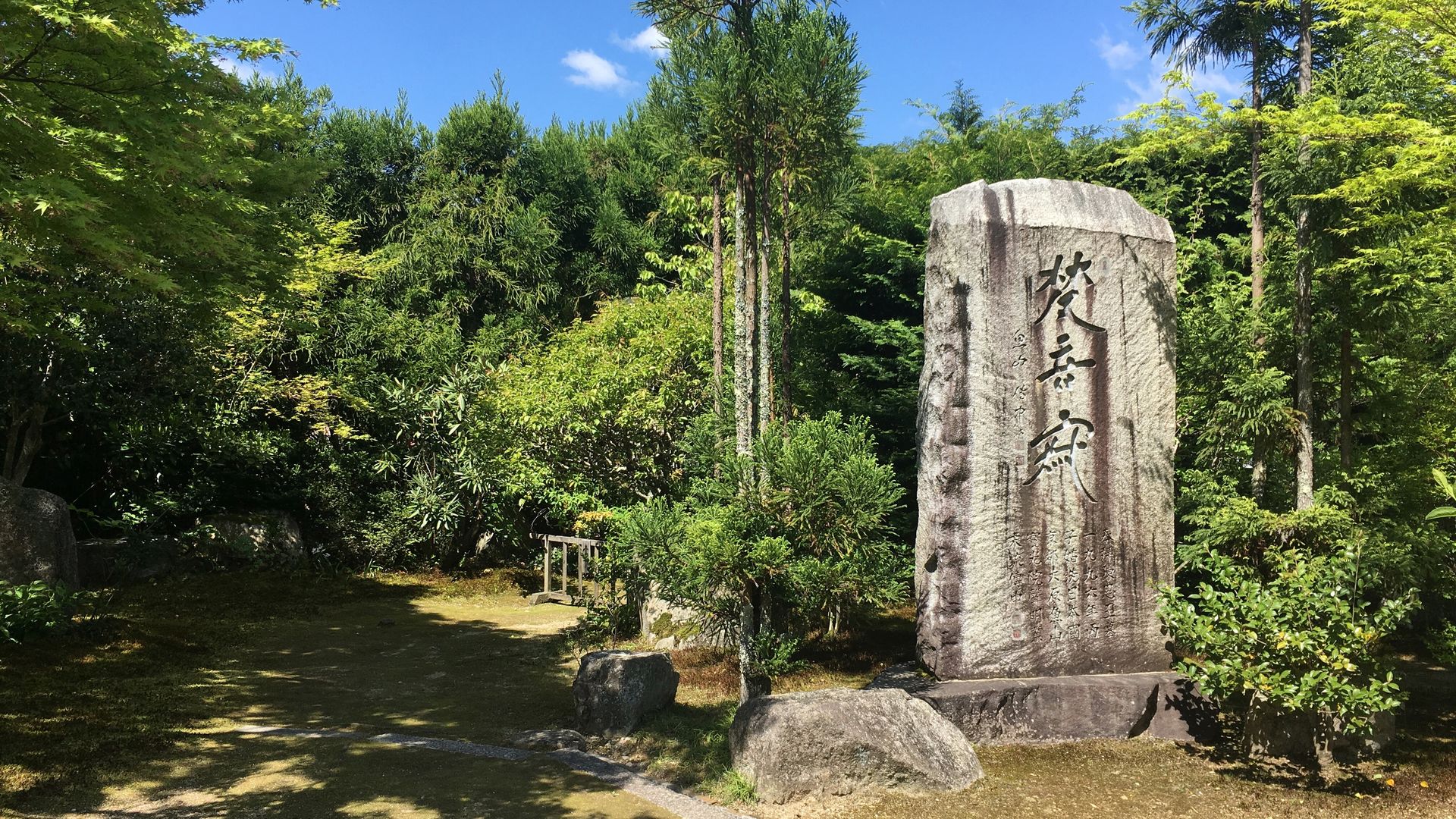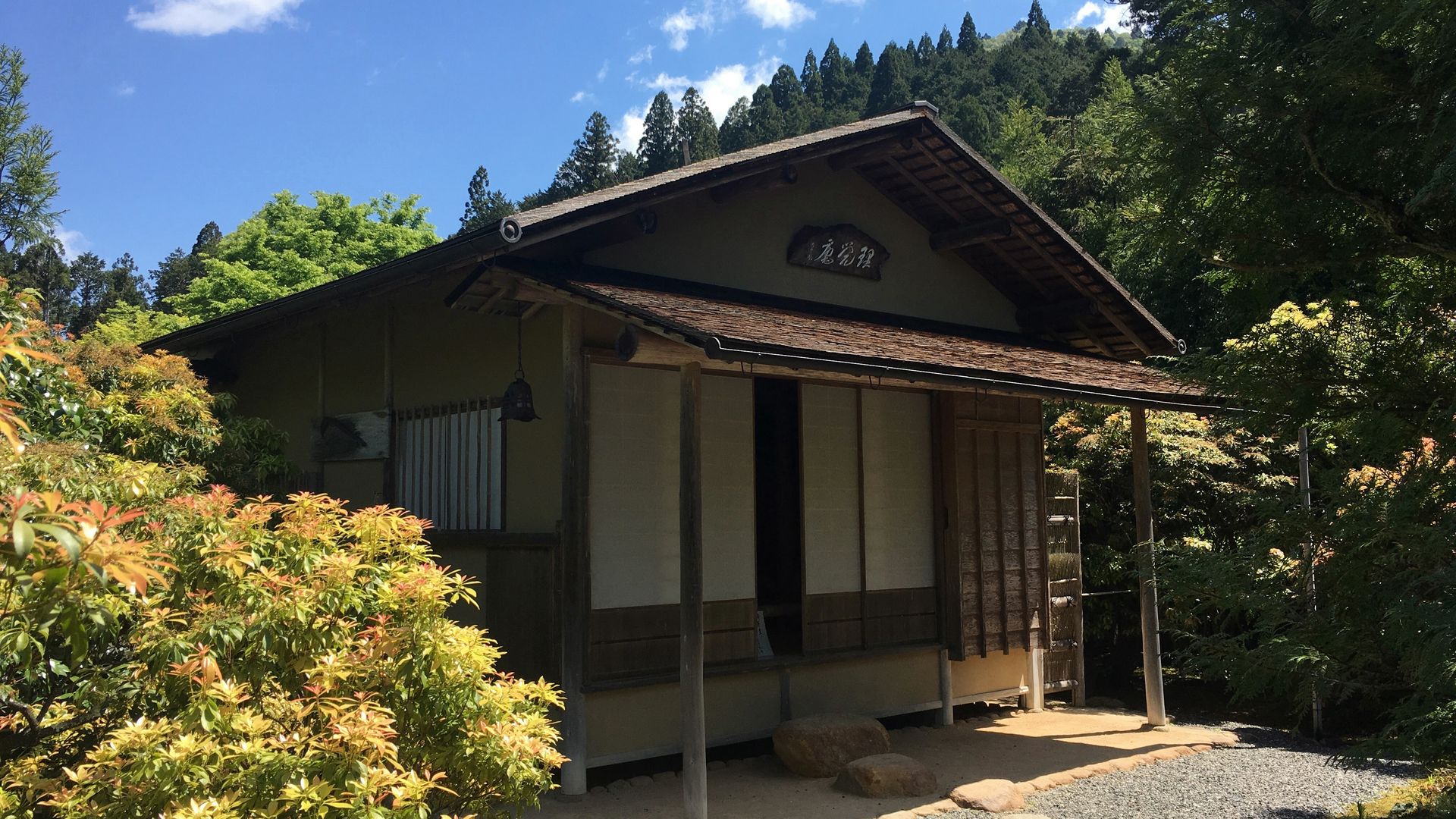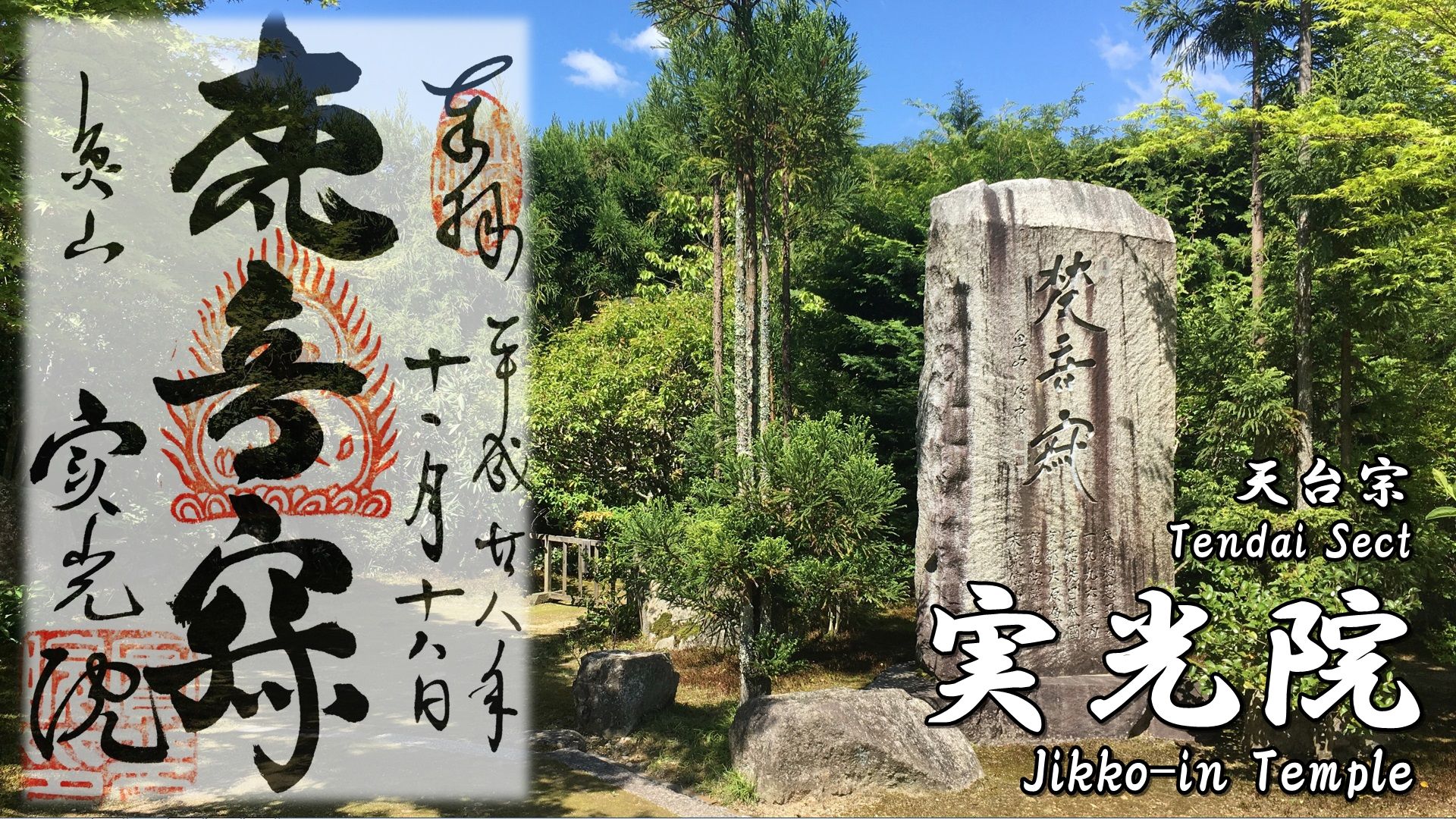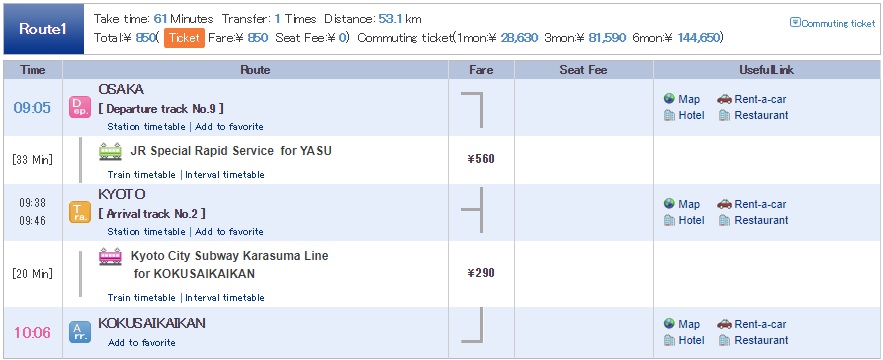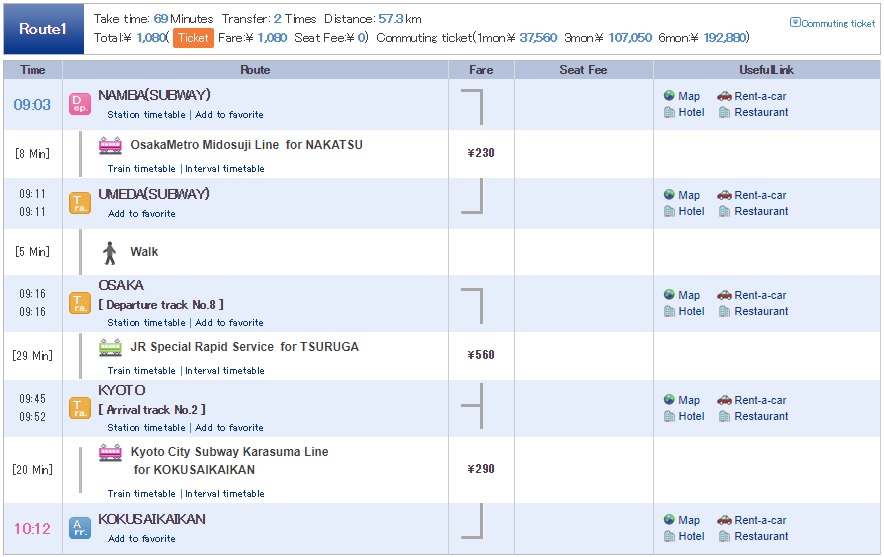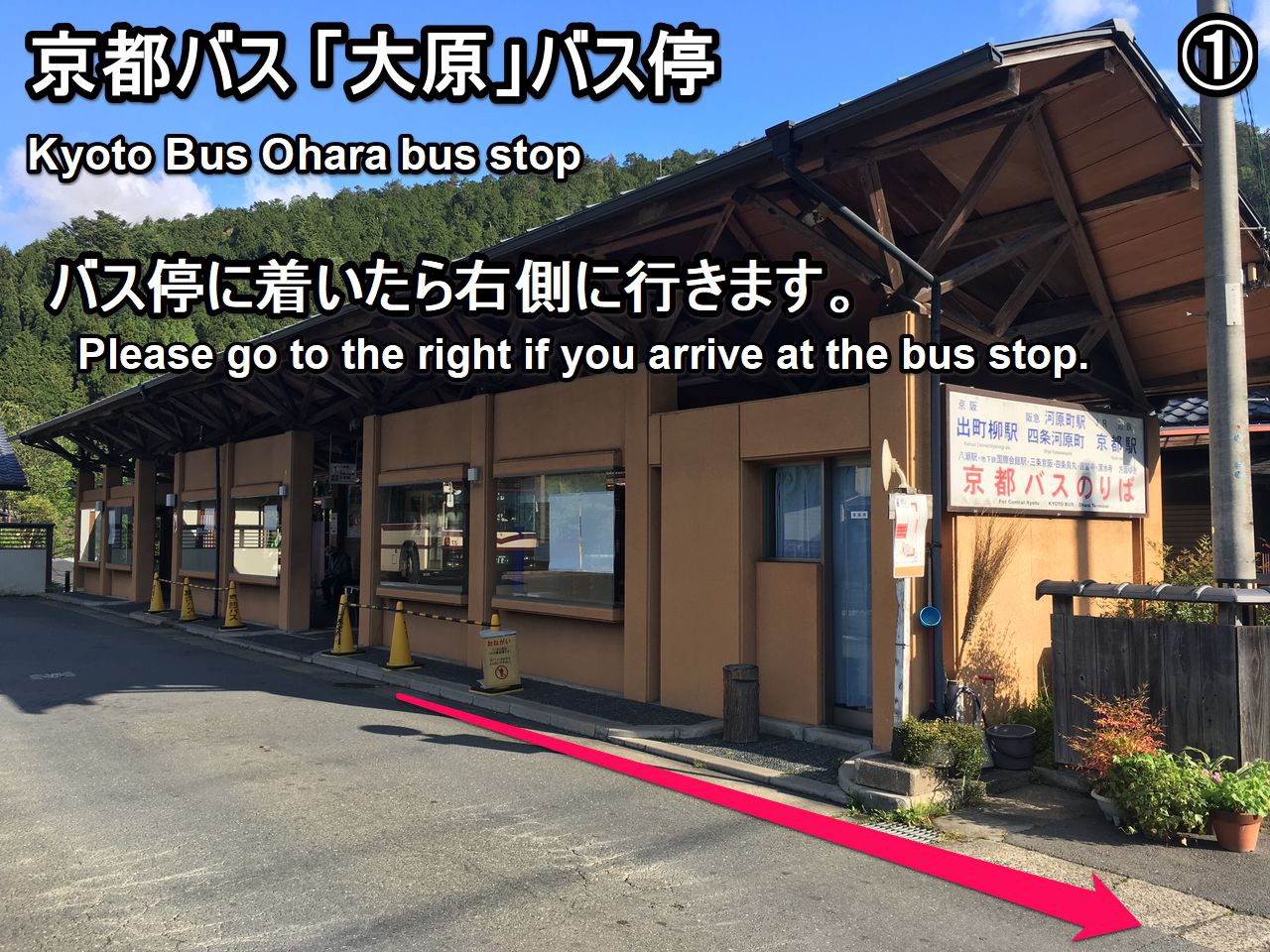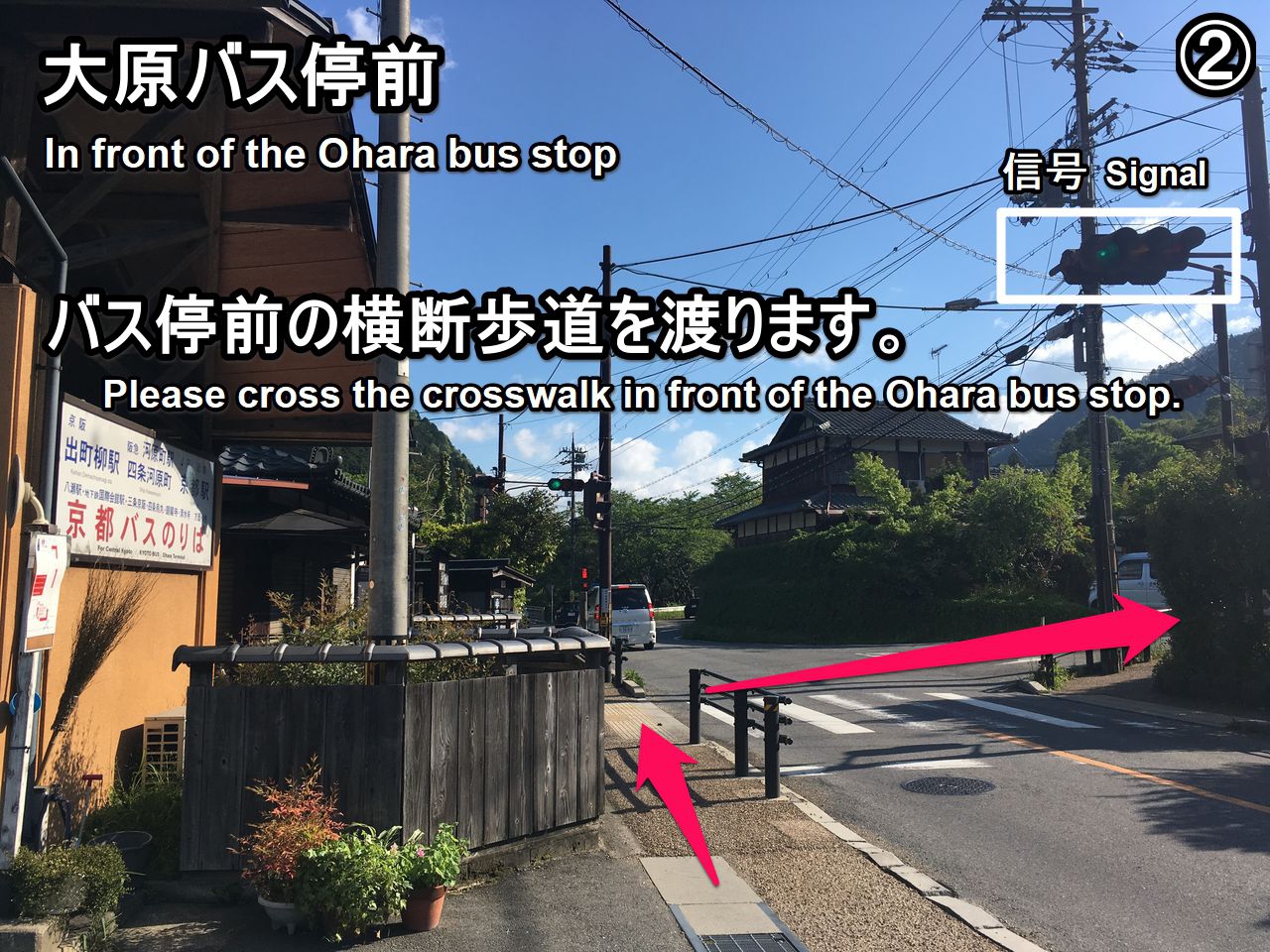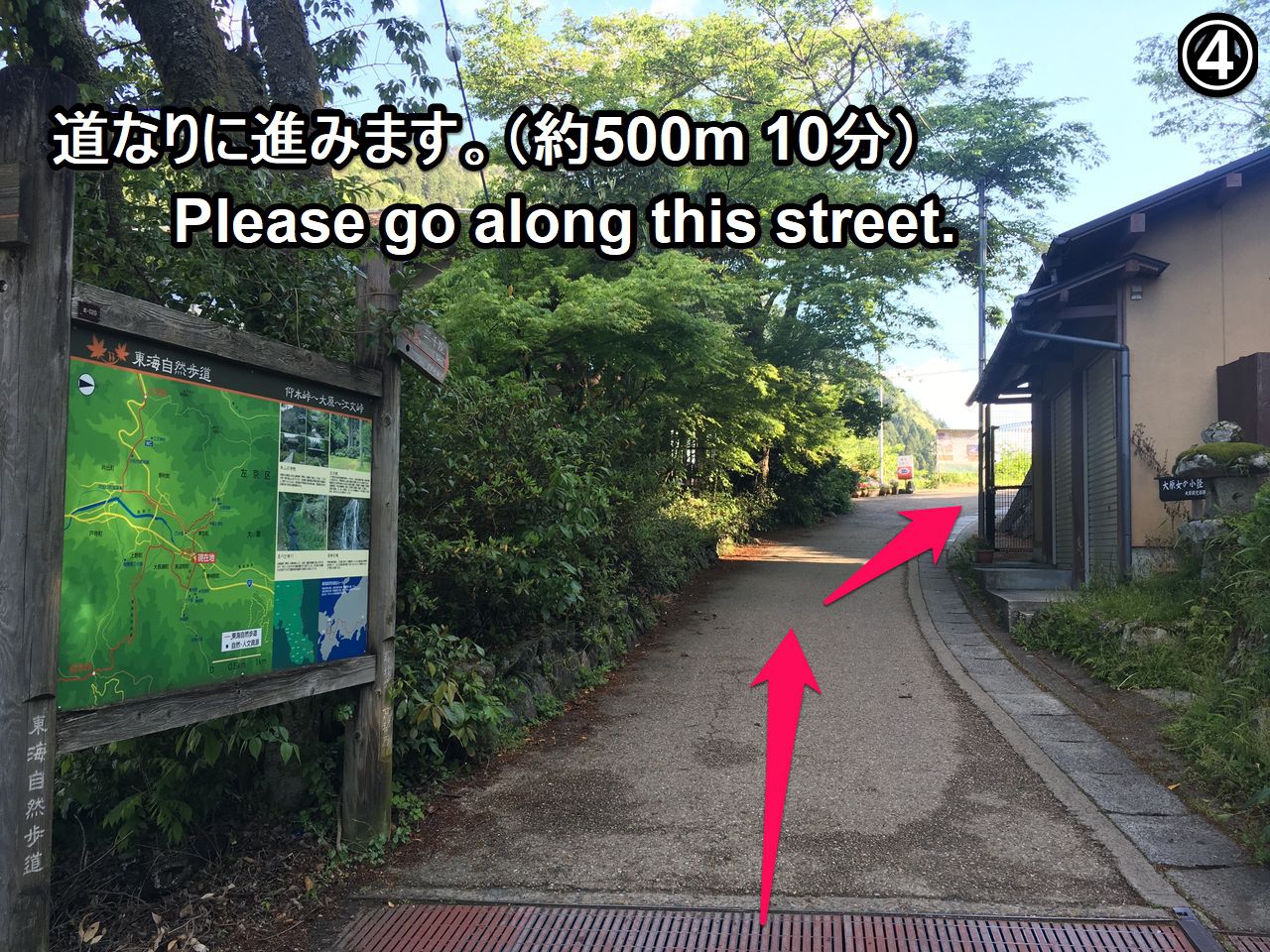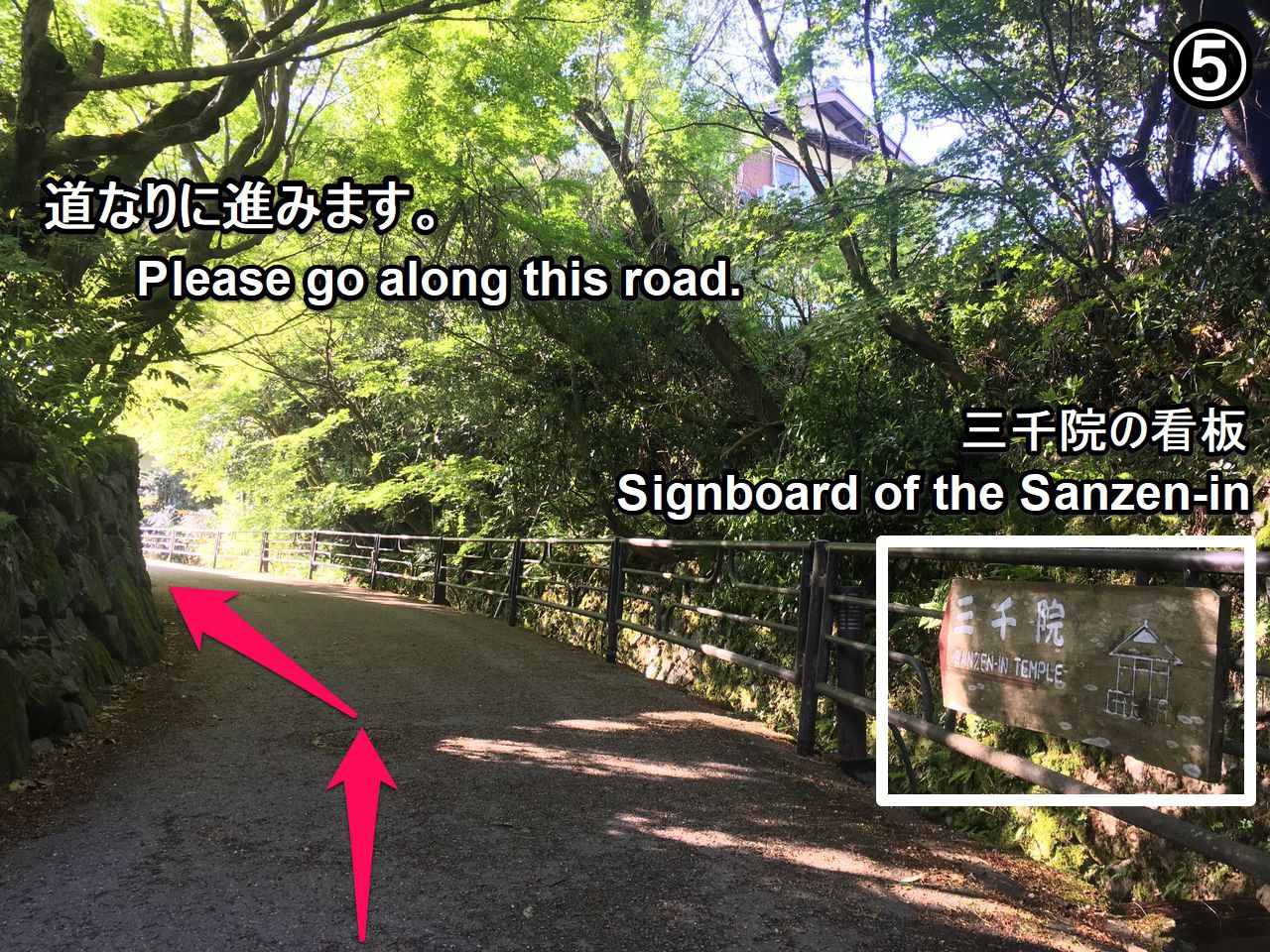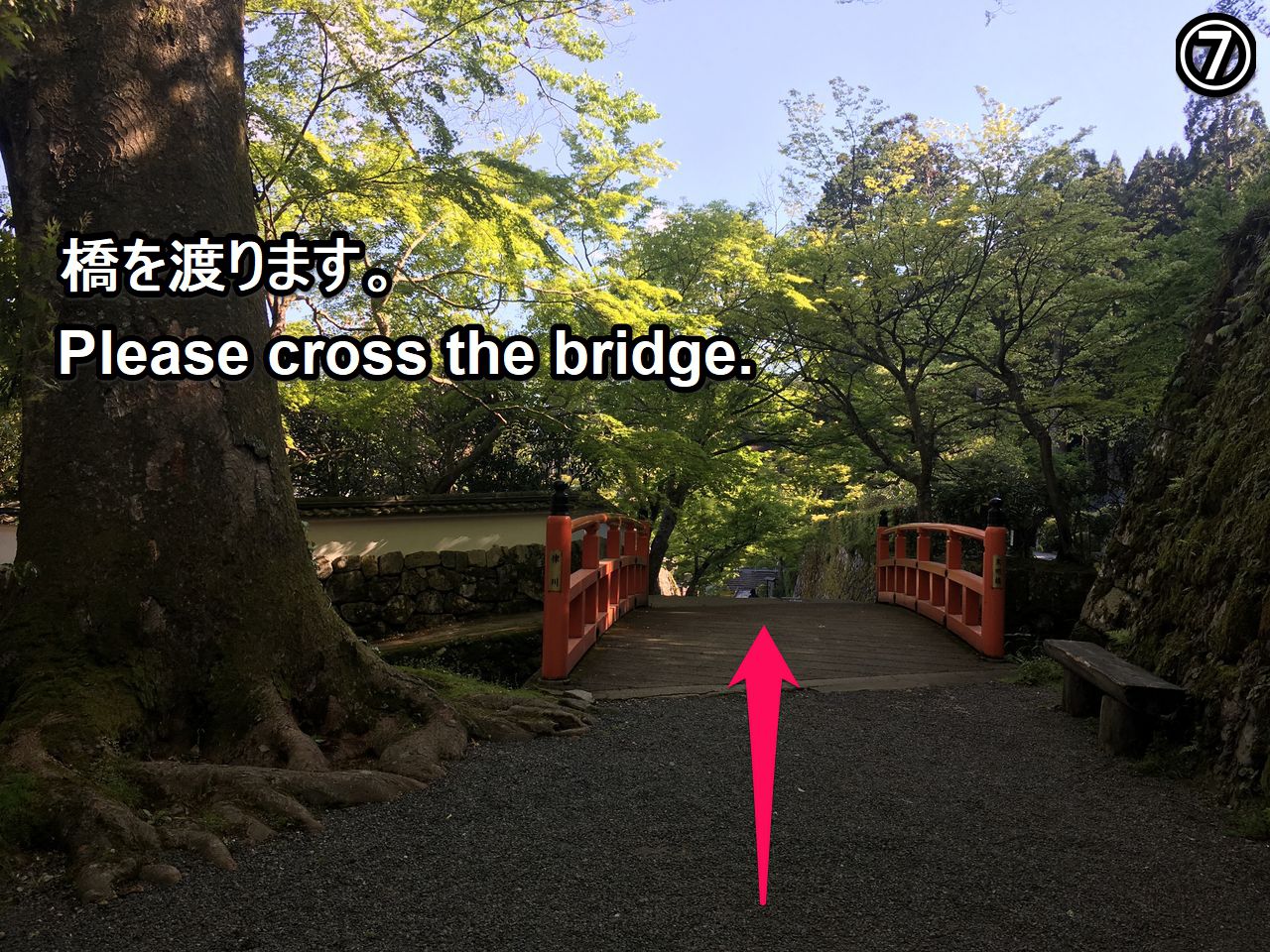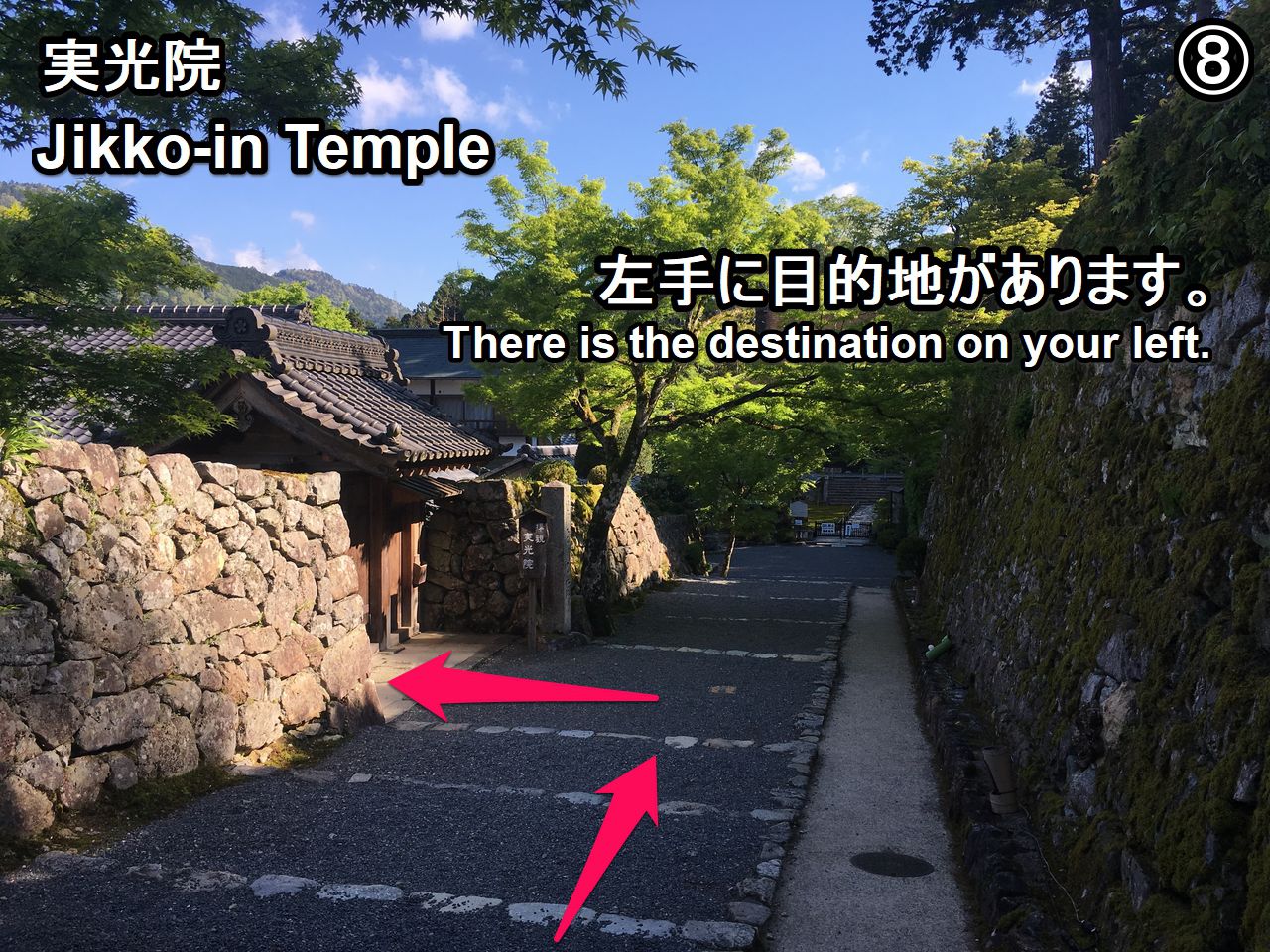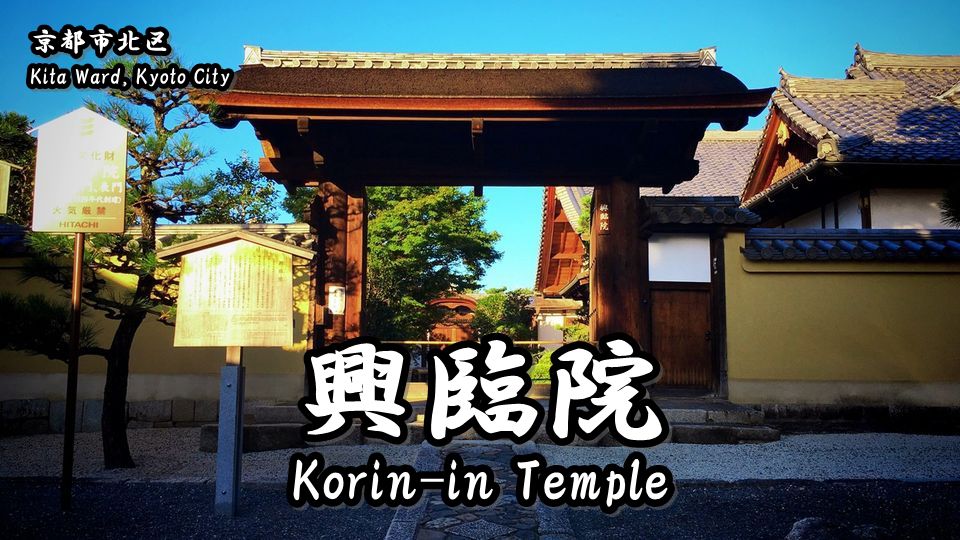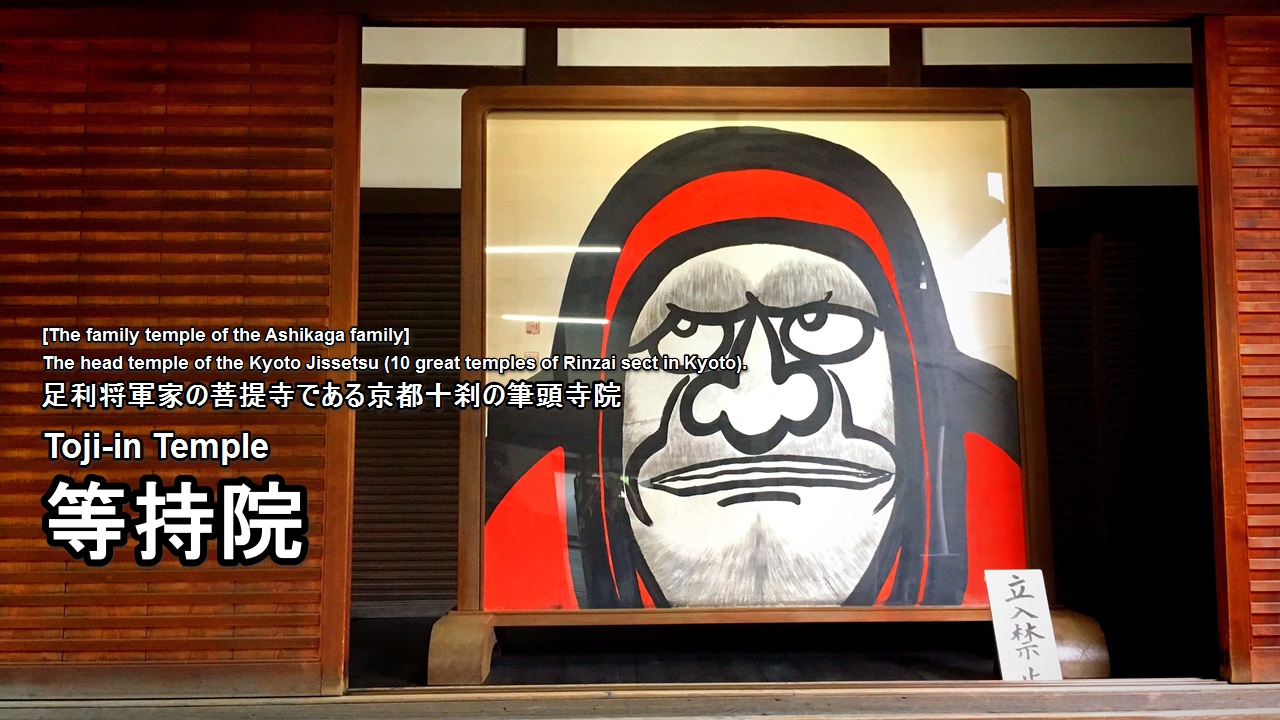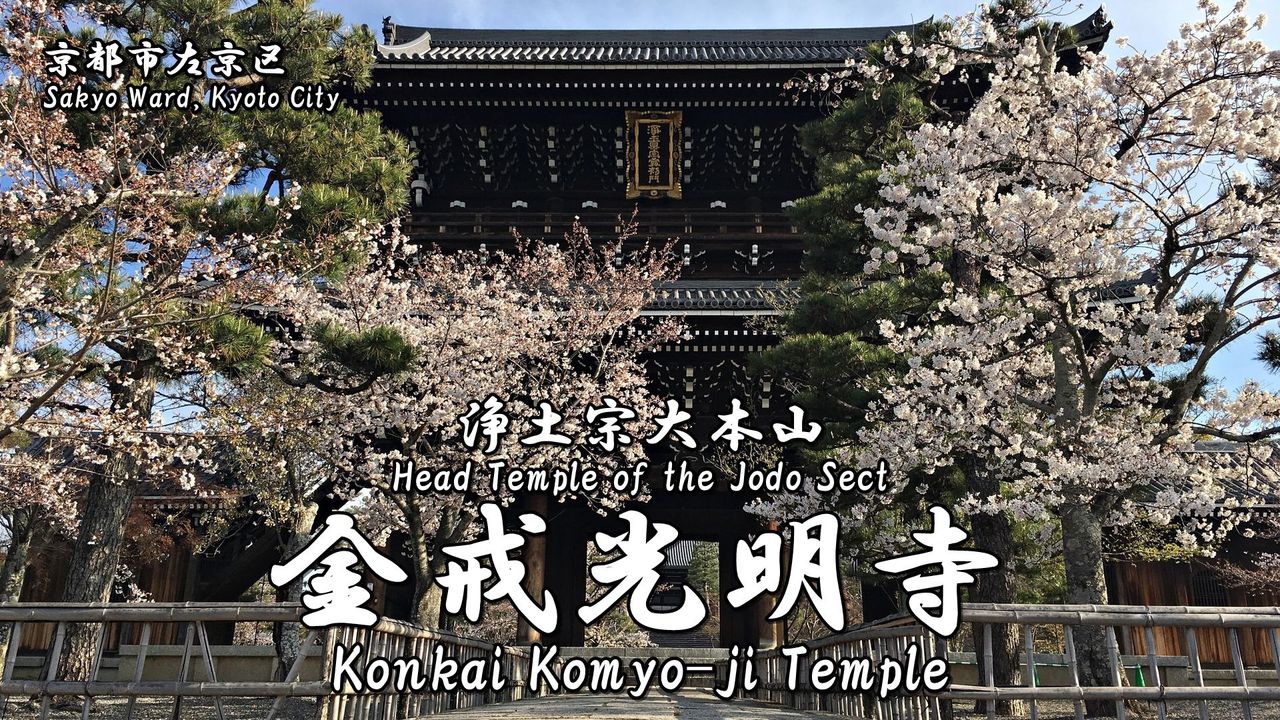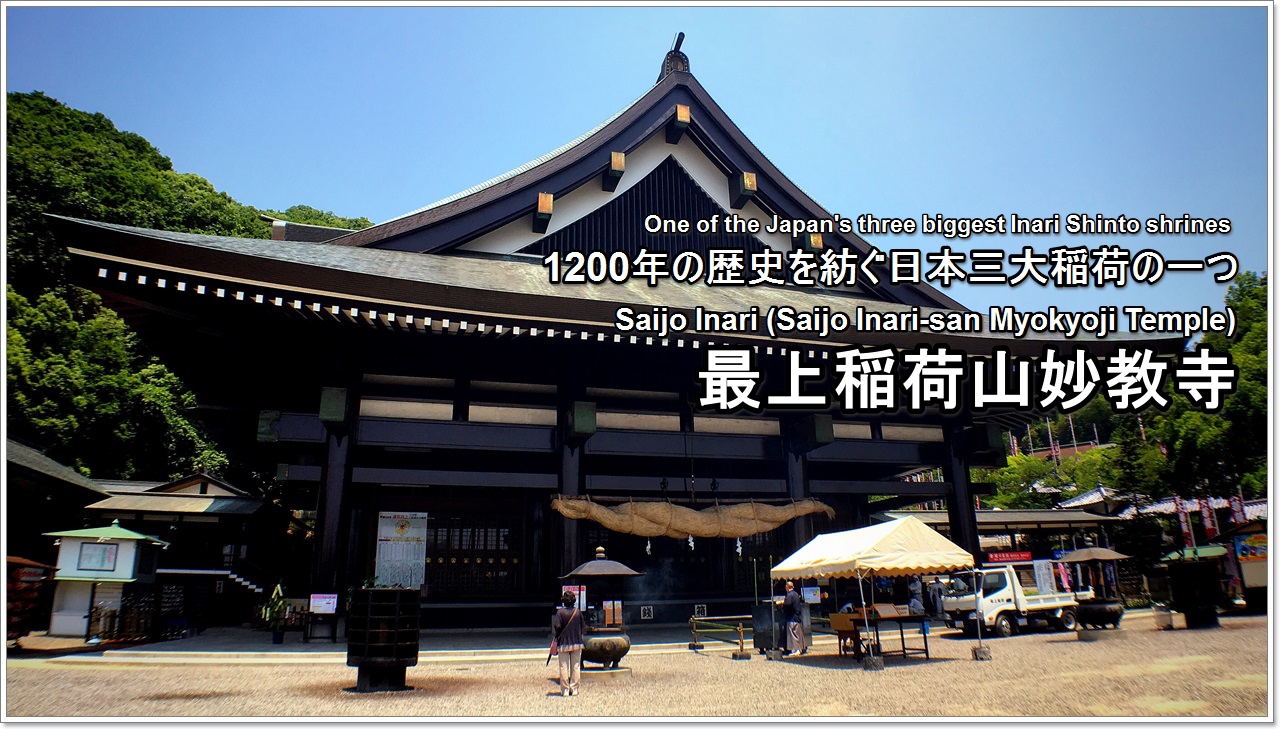Jikko-in Temple, a sub-temple of the Shorin-in, is a Tendai sect Buddhist temple located in Ohara, Sakyo Ward, Kyoto City.
The principal image (honzon) is Jizo Bosatsu (Jizo Bodhisattva).
There are two Japanese gardens in the precincts.
One is a Chisen-kanshoshiki-teien (pond appreciation style garden) called ‘Keishin-en’, and the other is a circuit style garden, using the scenery of Ohara Sanzan (Three Mountains of Ohara).
History of Jikko-in
Let’s study the history of this temple with me.
I think that we can enjoy sightseeing of this temple more by learning the history of it. XD
Jikko-in Temple was revived during the Oei era (1394-1428) of the Muromachi period by Soshin Hoin.
It is one of the sub-temple of Shorin-in (勝林院) which is the 21th temple among Honen Shonin’s 25 sacred sites.
In the Muromachi period, Mortuary tablet of the Emperor Gotoba and Emperor Juntoku were enshrined in this temple.
Those mortuary tablets are worshiped in ‘Ohara no Misasagi (大原陵)’ located in the neighbor of this temple now.
Originally, the precinct was on the east side from here, it moved to the current place in 1919 of the Taisho period.
Information for visitors
Website
Information
Address:187, Ohara Shorinincho, Kyoto Shi Sakyo Ku, Kyoto Fu, 601-1241, Japan
Phone:+81-75-744-2537
Foundation:during 1394 – 1428
Founder:Soshin Hoin (宗信法印)
Sect:Tendai Sect (天台宗)
Principal image:Jizo Bosatsu (Jizo Bodhisattva, 地蔵菩薩)
Open
| Month | Open |
| December – October | 9:00~16:00 |
| November | 9:00~16:30 |
Admission Fee
| Junior high school students or older | Elementary school student or younger |
| 700 yen | 300 yen |
(Include a green tea.)
Other Informations
Inside the building, there are places where photography is prohibited. (Please follow the official’s instructions.)
The worship method of a shinto shrine and a buddhist temple, please refer to the following article.
Next, let’s go to see the highlights of this temple with me!
Highlights of Jikko-in
- 山門:San-mon gate
- 客殿*:Kyaku-den hall*
- 契心園*:Keishin-en garden*
- 西庭園*:West garden*
- 梵音寂の石碑*:Stone monument*
- 茶室 理覚庵*:Rikaku-an*
This mark 「*」 is a pay area.
山門:San-mon gate
San-mon gate has the role of an entrance to the precincts of this temple.
客殿*:Kyaku-den hall*
Kyakuden has the role of a guest hall.
It was built in 1921 of the Taisho period.
The appearance of the Kyaku-den hall.
It faces two gardens.
One is a Chisen-kanshoshiki-teien (pond appreciation style garden) called ‘Keishin-en’.
And the other is a circuit style garden, using the scenery of Ohara Sanzan (Three Mountains of Ohara).
An admission fee, it includes a green tea service.
契心園*:Keishin-en garden*
This is the Chisen-kanshoshiki-teien (pond appreciation style garden) called ‘Keishin-en’ which was created in the late edo period.
This is an autumn scenery of the gardens.
西庭園*:West garden*
It is a circuit style garden, using the scenery of Ohara Sanzan (Three Mountains of Ohara).
This is an autumn scenery of the gardens.
梵音寂の石碑*:Stone monument*
A kanji (Chinese character) called ‘Bonnonjaku (梵音寂)’ is engraved into this monument.
Bonnon (梵音) has a meaning of ‘the voice of the prayer to Buddha’ and Jaku (寂) has a meaning of ‘silence’.
So it has the following meaning.
‘It is very quiet here, so you can only hear the voice of the prayer to Buddha.’
茶室 理覚庵*:Rikaku-an*
This is a tea-ceremony room which was built in 1975 of the Showa period.
Autumn leaves of Jikko-in
The precincts of this temple is also famous for its autumn leaves.
The best season of autumn leaves is late November to early December.
Video of Jikko-in
Photos of Jikko-in
Goshuin (Red ink stamps) of Jikko-in
Sanzen-in’s red ink stamp (goshuin), ‘Bonnonjaku (梵音寂).’
How to get to Jikko-in
The nearest station is Kyoto Bus Ohara bus stop.
It is about 15 minutes on foot from Ohara bus stop.
We recommend that you go to Kokusaikaikan Station by a train, and get on a bus from Kokusaikaikan Station.
From Osaka Sta. to Kokusaikaikan Sta. (by train)
Timetable and Route Search (train)
1.Get on the JR Kyoto Line from Osaka Station to Kyoto Station.
2.Change to the Kyoto City Subway Karasuma Line at Kyoto Station.
3.Get on the Kyoto City Subway Karasuma Line from Kyoto Station to Kokusaikaikan Station.
From Namba Sta. to Kokusaikaikan Sta. (by train)
Timetable and Route Search (train)
1.Get on the Osaka Metro Midosuji Line from Namba Station to Umeda (Osaka) Station.
2.Get on the JR Kyoto Line from Osaka Station to Kyoto Station.
3.Change to the Kyoto City Subway Karasuma Line at Kyoto Station.
4.Get on the Kyoto City Subway Karasuma Line from Kyoto Station to Kokusaikaikan Station.
From Namba Sta. to Kokusaikaikan Sta. (by train)
Timetable and Route Search (train)
1.Get on the Kyoto City Subway Karasuma Line from Kyoto Station to Kokusaikaikan Station.
Get on a bus from Kokusaikaikan Station
Timetable and Route Search (bus)
Please get on a bus No.19 (bus stop 3).
[Timetable] Kyoto Bus No. 19
Bus company:Kyoto Bus
Routes/Destination:No.19 [Bound for Ohara・Kodeishi]
Boarding bus stop:Kokusaikaikan Sta. [3]
Alighting bus stop:Ohara
Bus fare:350 yen
Time required:About 22 min
Get on a bus from Keihan Demachiyanagi Station
Timetable and Route Search (bus)
Please get on a bus No.16 or No.17 (bus stop C).
[Timetable] Kyoto Bus No. 16 / 17
Bus company:Kyoto Bus
Routes/Destination:No.16 /17 [Bound for Ohara]
Boarding bus stop:Demachiyanagi Sta.[C]
Alighting bus stop:Ohara
Bus fare:430 yen
Time required:About 33 min
Get on a bus from Hankyu Kawaramachi Station
Timetable and Route Search (bus)
Please get on a bus No.17 (bus stop ‘To North’).
[Timetable] Kyoto Bus No. 17
Bus company:Kyoto Bus
Routes/Destination:No.17 [Bound for Ohara]
Boarding bus stop:Shijo Kawaramachi [To north]
Alighting bus stop:Ohara
Bus fare:520 yen
Time required:About 52 min
Get on a bus from JR/Subway Kyoto Station
Timetable and Route Search (bus)
Please get on a bus No.17 (bus stop C3).
[Timetable] Kyoto Bus No. 17
Bus company:Kyoto Bus
Routes/Destination:No.17 [Bound for Ohara]
Boarding bus stop:Kyoto Sta. [C3]
Alighting bus stop:Ohara
Bus fare:550 yen
Time required:About 68 min
From Ohara bus stop (on foot)
It is about 15 minutes (650 meters) on foot from Ohara bus stop.
Take a taxi
From Kyoto Station:about 6600 yen (40 minutes)
From Gion-Shijo Station:about 5900 yen (35 minutes)
From Kokusaikaikan Station:about 3500 yen (20 minutes)
・Let’s show a taxi driver the following phrase.
・If you want to call a taxi, let’s show the following phrase.
[Phone number of taxi dispatch : Around the Kyoto Station]*Japanese text only.
Hotel search & reservation
How did you like it?
Have a nice trip! XD

